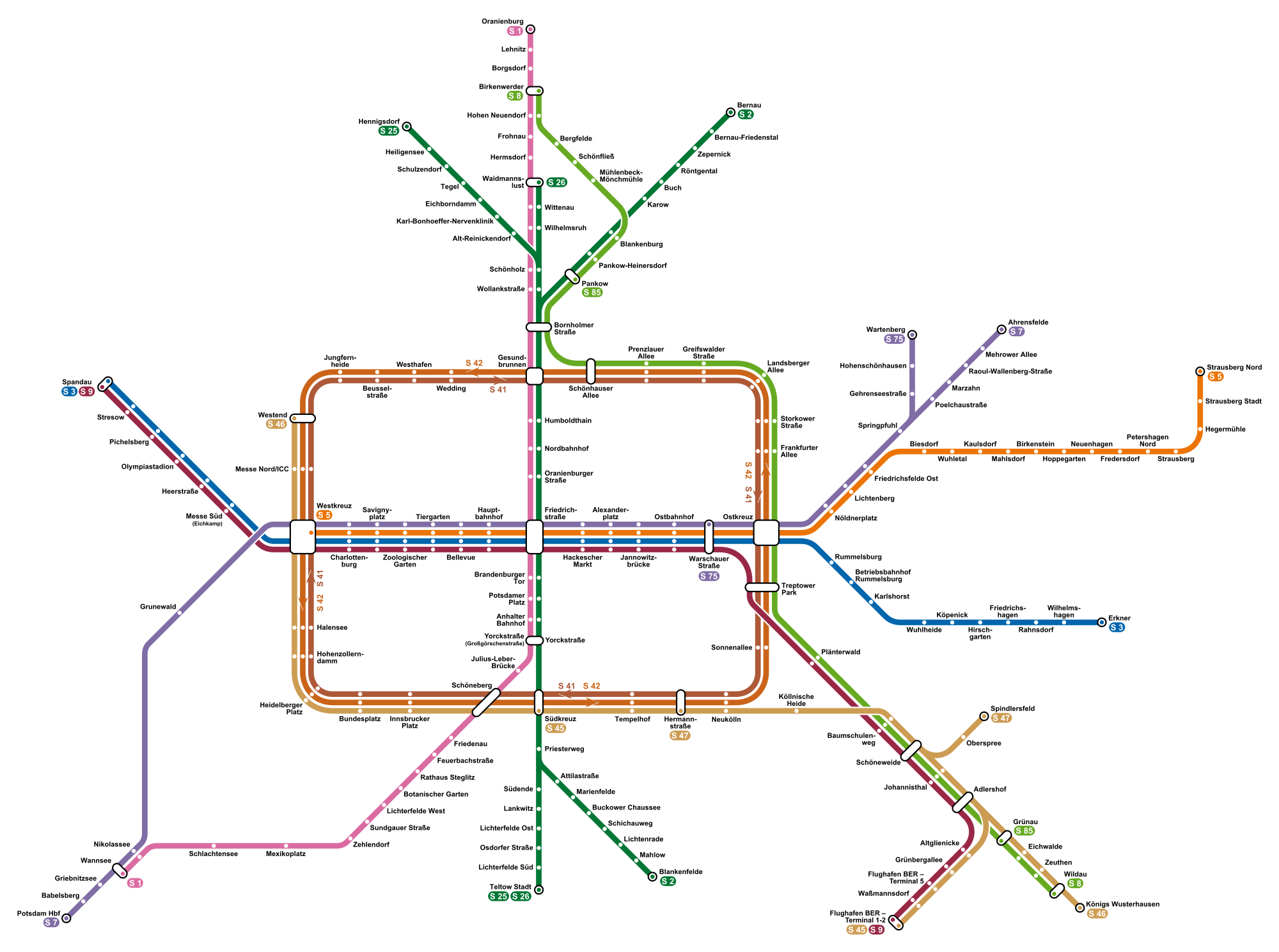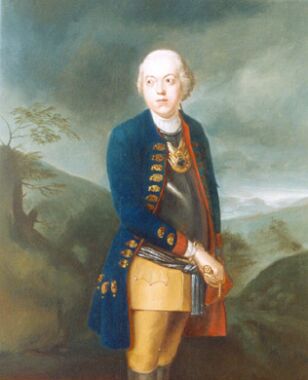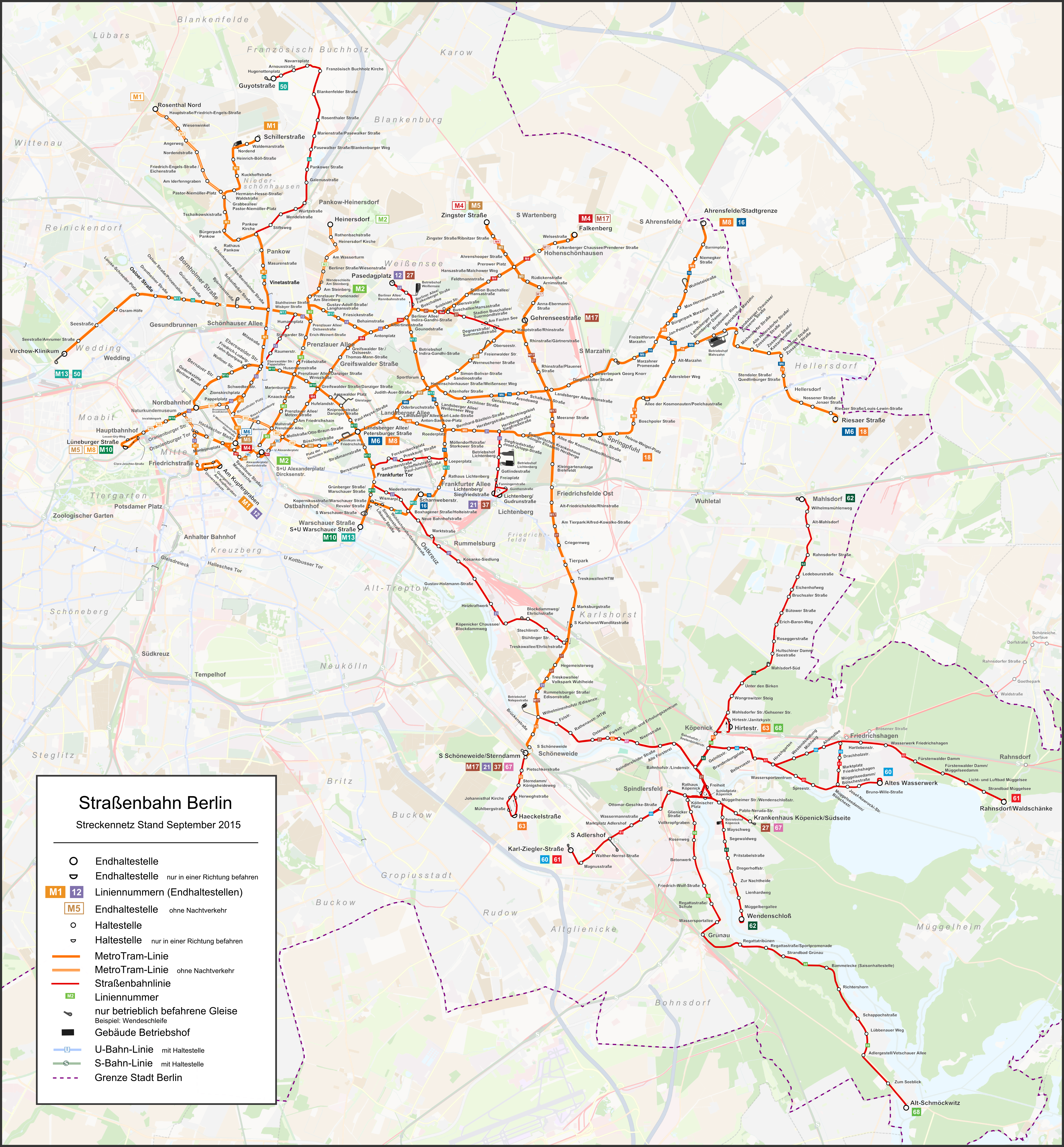|
Hackescher Markt
Hackescher Markt ("Hacke's Market") is a square in the central Mitte locality of Berlin, Germany, situated at the eastern end of Oranienburger Strasse. It is an important transport hub and a starting point for the city's nightlife. Overview Originally a marsh north of the city fortifications on the road to Spandau, the Prussian king Frederick the Great about 1750 had a market square laid out under the surveillance of Townmajor Hans Christoph Friedrich Graf von Hacke in the course of a northern town expansion. It was officially named after Hacke on 23 July 1840. In 1882 the area received access to the Berlin Stadtbahn railway line at Berlin Hackescher Markt station, then called ''Börse'' after the nearby stock exchange. The station was renamed '' Marx-Engels-Platz'' during the GDR era. Formerly a rather neglected area, Hackescher Markt with its old buildings has developed into a cultural and commercial centre after German reunification German reunification (g ... [...More Info...] [...Related Items...] OR: [Wikipedia] [Google] [Baidu] |
Berlin Hackescher Markt Station
Berlin Hackescher Markt is a railway station in the Mitte district of Berlin, Germany. It is named after the adjacent ''Hackescher Markt'' square. Overview The station is located on the elevated Berlin Stadtbahn line, which crosses central Berlin from east to west. The Stadtbahn carries local S-Bahn services on one pair of tracks, and longer distance services on another pair. Hackescher Markt station is served by S-Bahn lines , , and . Longer distance services pass the station without stopping. The station opened in 1882 and was originally named ''Börse'' (stock exchange) and then ''Marx-Engels-Platz'' during the GDR era. In 1992 it received the name ''Hackescher Markt'' from the adjacent square. Following the demolition of the Lehrter Stadtbahnhof (architecturally similar and previously listed), with Bellevue it is now one of only two Stadtbahn stations preserved in their original condition. As well as its rail connections, the station is also served by four tram lines, two ... [...More Info...] [...Related Items...] OR: [Wikipedia] [Google] [Baidu] |
Berlin S-Bahn
The Berlin S-Bahn () is a rapid transit railway system in and around Berlin, the capital city of Germany. It has been in operation under this name since December 1930, having been previously called the special tariff area ''Berliner Stadt-, Ring- und Vorortbahnen'' (Berlin city, orbital, and suburban railways). It complements the Berlin U-Bahn and is the link to many outer-Berlin areas, such as Berlin Brandenburg Airport. As such, the Berlin S-Bahn blends elements of a commuter rail service and a rapid transit system. In its first decades of operation, the trains were steam-drawn; even after the electrification of large parts of the network, a number of lines remained under steam. Today, the term ''S-Bahn'' is used in Berlin only for those lines and trains with third-rail electrical power transmission and the special Berlin S-Bahn loading gauge. The third unique technical feature of the Berlin S-Bahn, the , is being phased out and replaced by a communications-based train contro ... [...More Info...] [...Related Items...] OR: [Wikipedia] [Google] [Baidu] |
Hans Christoph Friedrich Graf Von Hacke
Hans Christoph Friedrich Graf von Hacke (21 October 1699 in Staßfurt - 17 August 1754 in Berlin) was a Prussian General and Commandant of Berlin. The Hackescher Markt in Berlin is named after him. Early life In 1715, at the age of sixteen, Hacke went to join the army of the ''Soldier King'', Frederick William I of Prussia, and at 6'3" tall was assigned the 6th Royal Regiment, the ''Potsdam Giants''. He attracted attention through his particular attentiveness and adherence to orders, which would earn him a great career. At eighteen, he was an ensign, at twenty a lieutenant, twenty-six a first lieutenant, twenty-nine a staff captain, and thirty-two a Hofjägermeister. Career His services were greatly appreciated by the King, who permitted him in 1722 to have an oil portrait painted with his hand on his sword. In 1740, he was appointed Royal Adjutant General, making him one of the most significant figures in the King's circle and one of the most influential officers. The royal court ... [...More Info...] [...Related Items...] OR: [Wikipedia] [Google] [Baidu] |
Night Bus Service
Night service, sometimes also known as owl service, refers to the public transport services operated during the night hours. These services are operated, mainly using buses but in certain cases using trams (or streetcars), not including intercity bus service, inter-city rail or flight that run through midnight, either in addition to or in substitution for ordinary daytime services or rapid transit rail services which may shut for maintenance or due to lack of passenger volumes at night in many cities worldwide. Night-based services may be differently branded compared to daytime services. Examples are London and Chicago, where overnight buses are prefixed with an "N" for "night". Another common way to distinguish night services from their daytime counterparts is dark-colored line numbers. Some cities apply a different fare structure for night services from their daytime services. Characteristics 24-hour, continuous rapid transit operation is practiced in some cities, most ... [...More Info...] [...Related Items...] OR: [Wikipedia] [Google] [Baidu] |
Berlin Tram
The Berlin tramway (german: Straßenbahn Berlin) is the main tram system in Berlin, Germany. It is one of the oldest tram networks in the world having its origins in 1865 and is operated by (BVG), which was founded in 1929. It is notable for being the third-largest tram system in the world, after Melbourne and St. Petersburg. Berlin's tram system is made up of 22 lines that operate across a standard gauge network, with almost 800 stops and measuring almost in route length and in line length. Nine of the lines, called Metrotram, operate 24 hours a day and are identified with the letter "M" before their number; the other thirteen lines are regular city tram lines and are identified by just a line number. Most of the recent network is within the confines of the former East Berlin—tram lines within West Berlin having been replaced by buses during the division of Berlin. However the first extension into West Berlin opened in 1994 on today's M13. In the eastern v ... [...More Info...] [...Related Items...] OR: [Wikipedia] [Google] [Baidu] |
Hackesche Höfe
The Hackesche Höfe ( en, Hacke's Courtyards) is a notable courtyard complex situated adjacent to the Hackescher Markt in the centre of Berlin. The complex consists of eight interconnected courtyards, accessed through a main arched entrance at number 40 Rosenthaler Straße. The complex was designed in the Jugendstil (or Art Nouveau) style by August Endell, and the first courtyard is adorned with a magnificent facade of polychrome glazed brick. The construction of this project, launched in 1906, follows a pattern of clear separation between residential areas, crafts, trade and culture, which distinguishes it from the courtyards of the 19th century. In 1909 Kurt Hiller and Jakob van Hoddis established ''Der Neue Club'' here which hosted such events as the literary evenings they called the ''Neopathetisches Cabaret'' (Neo-pathetic Cabaret). These proved to be very popular, often attracting hundreds of spectators. There is a plaque commemorating van Hoddis as one of the victims of ... [...More Info...] [...Related Items...] OR: [Wikipedia] [Google] [Baidu] |
German Reunification
German reunification (german: link=no, Deutsche Wiedervereinigung) was the process of re-establishing Germany as a united and fully sovereign state, which took place between 2 May 1989 and 15 March 1991. The day of 3 October 1990 when the German Reunification Treaty entered into force dissolving the German Democratic Republic (GDR; german: link=no, Deutsche Demokratische Republik, DDR, or East Germany) and integrating its recently re-established constituent federated states into the Federal Republic of Germany (FRG; german: link=no, Bundesrepublik Deutschland, BRD, or West Germany) to form present-day Germany, has been chosen as the customary '' German Unity Day'' () and has thereafter been celebrated each year from 1991 as a national holiday. East and West Berlin were united into a single city and eventually became the capital of reunited Germany. The East Germany's government led by the Socialist Unity Party of Germany (SED) (a communist party) started to falter on 2 ... [...More Info...] [...Related Items...] OR: [Wikipedia] [Google] [Baidu] |
East Germany
East Germany, officially the German Democratic Republic (GDR; german: Deutsche Demokratische Republik, , DDR, ), was a country that existed from its creation on 7 October 1949 until its dissolution on 3 October 1990. In these years the state was a part of the Eastern Bloc in the Cold War. Commonly described as a communist state, it described itself as a socialist "workers' and peasants' state".Patrick Major, Jonathan Osmond, ''The Workers' and Peasants' State: Communism and Society in East Germany Under Ulbricht 1945–71'', Manchester University Press, 2002, Its territory was administered and occupied by Soviet forces following the end of World War II—the Soviet occupation zone of the Potsdam Agreement, bounded on the east by the Oder–Neisse line. The Soviet zone surrounded West Berlin but did not include it and West Berlin remained outside the jurisdiction of the GDR. Most scholars and academics describe the GDR as a totalitarian dictatorship. The GDR was est ... [...More Info...] [...Related Items...] OR: [Wikipedia] [Google] [Baidu] |
Schloßplatz (Berlin)
Schloßplatz (German for "Palace Square" or "Castle Square") is a square located on Museum Island (''Museumsinsel'') in Berlin, Germany. It measures about 225 m by 175 m, with its long side oriented on an axis approximately southwest/northeast. At its west corner is the Schlossbrücke (Palace Bridge), from which Unter den Linden leads west to the Brandenburg Gate. From the same corner, Karl-Liebknecht-Straße runs northeast alongside the square and on to Alexanderplatz. Until the early 20th century, only the square south of the palace was so named, the square north of it being the ''Lustgarten''. "Schloßplatz" is also a common name for squares in many German-speaking countries. Other cities which have a Schloßplatz include Frankfurt am Main, Stuttgart, Munich and Dresden. History It was the site of the Berliner Stadtschloss (Berlin City Palace). From 1949 to 1990 it was part of East Berlin, the capital of East Germany. In 1950, the remains of the city palace were blown up, a ... [...More Info...] [...Related Items...] OR: [Wikipedia] [Google] [Baidu] |
Berliner Börse
Berliner is most often used to designate a citizen of Berlin, Germany Berliner may also refer to: People * Berliner (surname) Places * Berliner Lake, a lake in Minnesota, United States * Berliner Philharmonie, concert hall in Berlin, Germany * Berliner See, a lake in Mecklenburg-Vorpommern, Germany * Berliner Straße (other), multiple streets in Germany with the name Arts, Entertainment, Media * Berliner (format), a paper size in newspapers * ''Berliner Abendblatt'', the leading weekly newspaper in Berlin * Berliner Ensemble, a German theatre company * ''Berliner Kurier'', a regional daily tabloid * ''Berliner Messe'', or ''Berlin Mass'', a mass by Arvo Pärt * ''Berliner Morgenpost'', 2nd most read newspaper in Berlin * Berliner Symphoniker, symphony orchestra in Berlin * ''Berliner Verkehrsblätter'', a journal on public transport in Berlin * ''Berliner Woche'', advertising weekly in Berlin * ''Berliner Zeitung'', daily newspaper in Berlin * ''The Berliner'' (film), ... [...More Info...] [...Related Items...] OR: [Wikipedia] [Google] [Baidu] |
Berlin Stadtbahn
The Berlin Stadtbahn ("city railway") is a major railway thoroughfare in the German capital Berlin, which runs through Berlin from east to west. It connects the eastern district of Friedrichshain with Charlottenburg in the west via 11 intermediate stations including Hauptbahnhof. The Berlin Stadtbahn is often also defined as the slightly longer route between Ostkreuz and Westkreuz, although this is not technically correct. The line was originally built in the 1880s. It is in length, and is entirely elevated above the city's streets. The four track route carries S-Bahn, Regionalbahn, Regional-Express, Intercity, EuroCity and Intercity-Express trains. Operation Structure and tracks The Stadtbahn line is an elevated rail line with viaducts totalling in length and including 731 masonry viaduct arches. A further of the line are situated on 64 bridges, that cross adjoining streets and (three times) the River Spree. The remaining length of the line is on an embankm ... [...More Info...] [...Related Items...] OR: [Wikipedia] [Google] [Baidu] |
Frederick The Great
Frederick II (german: Friedrich II.; 24 January 171217 August 1786) was King in Prussia from 1740 until 1772, and King of Prussia from 1772 until his death in 1786. His most significant accomplishments include his military successes in the Silesian wars, his re-organisation of the Prussian Army, the First Partition of Poland, and his patronage of the arts and the Enlightenment. Frederick was the last Hohenzollern monarch titled King in Prussia, declaring himself King of Prussia after annexing Polish Prussia from the Polish–Lithuanian Commonwealth in 1772. Prussia greatly increased its territories and became a major military power in Europe under his rule. He became known as Frederick the Great (german: links=no, Friedrich der Große) and was nicknamed "Old Fritz" (german: links=no, "Der Alte Fritz"). In his youth, Frederick was more interested in music and philosophy than in the art of war, which led to clashes with his authoritarian father, Frederick William I of Prus ... [...More Info...] [...Related Items...] OR: [Wikipedia] [Google] [Baidu] |








